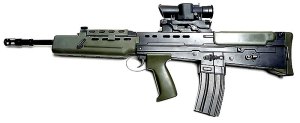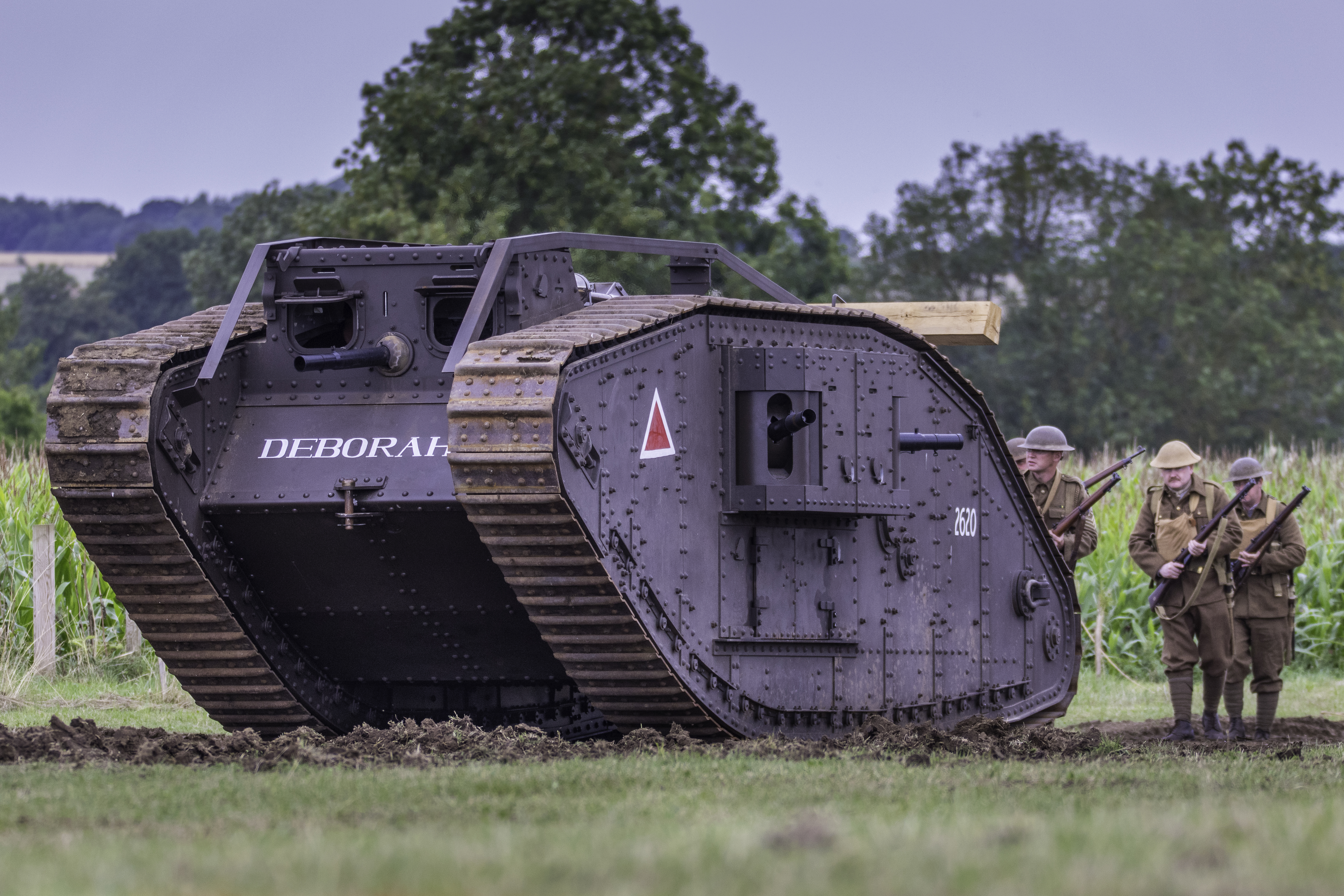SA80
 RIFLE 5.56MM (223”) L85 A1 KNOWN AS THE SA 80 IN POLITE CIRCLES is the current (2006) issue to the British Forces. Well, somebody had to make a disaster, but that it was manufactured at the Royal Small Arms Factory Enfield and later at R.O.F. Nottingham can only be seen as a disaster for the British Forces. The worth of any weapons system is how well it sells abroad We finished up GIVING the thing to a Mozambique who sent it back to us! No sale to foreign forces has occurred, although the SUSAT sight has been more successful in the export market.
RIFLE 5.56MM (223”) L85 A1 KNOWN AS THE SA 80 IN POLITE CIRCLES is the current (2006) issue to the British Forces. Well, somebody had to make a disaster, but that it was manufactured at the Royal Small Arms Factory Enfield and later at R.O.F. Nottingham can only be seen as a disaster for the British Forces. The worth of any weapons system is how well it sells abroad We finished up GIVING the thing to a Mozambique who sent it back to us! No sale to foreign forces has occurred, although the SUSAT sight has been more successful in the export market.
Millions of pounds have been spent on it eventually getting Heckler & Koch to try to get it to work better as the A2 model. It is a bull-pup design which means the magazine is at the rear of the weapon, behind the pistol grip. This allows a normal length of barrel but keeping the overall length of the rifle as short as possible.
The reason for this was to make exit from an armoured personnel carrier easier than with the conventional length rifle as in the form of the Rifle 7.62mm. L.1.A.1 commonly known as the S.L.R., in service with us from 1957 until the late 1980’s. The SA80 entered service with us in the late 1980’s and soon disgraced itself, but then, it never did pass it’s sand, dust, mud & arctic trials, all our previous firearms had these hurdles to overcome & overcome them they did. The S.A.80 was a political decision, the Small Arm Factories were being privatised and the like of Enfield had been existing rather than producing.
A busy factory was needed to show potential customers that things were in a healthy state. Production of ANYTHING would look good, even if it was a failure. The bull pup design was re-born and produced even though it was known to be rubbish. We had designed a wonderful bull pup rifle in the 1950’s called the EM 2 in .280” calibre. This was rejected because of political pressure, exactly the same reason that the S.A 80 was adopted. It would be wrong to condemn this without stating some facts. It is heavier than the L.1.A.1.; it is mainly manufactured from thin pressed light gauge steel that twists, fractures and dents easily in service. The poor quality results in the spot welded sight base, locking rail and body pins either falling off, or resulting in torn tin. It dumps its dreadfully manufactured magazines out of the magazine housing, the catch presses against pouches or chest. Several modifications have been tried, and none have really worked. The optic sight condenses internally because it is not vacuumed out in manufacture, and anyway, if the clamp screws are tightened too tightly, the clamps pull the spot welded rail off the top of the body, resulting in both sight and rail simply falling off. The rifle needs to be oiled internally to operate. Fine perhaps in Catterick but not in sandy conditions where a combination of oil and grit very quickly result in a jammed or non-firing rifle. The soldiers are told to keep the mechanism free of oil until they are attacked, then squirt oil into the ejection port and put the thing on “full automatic” in a hope that a few rounds might be fired before the thing jams.
The bayonet is a socket device made in cast steel. Very interesting unless you have to use it. Cast steel is very brittle and the thing either snaps off at the socket or the point drops off. Armourers are allowed to reprofile the point providing no more than an inch is lost. The flash hider on the rifle muzzle has a slot underneath as well as around the periphery. No other manufacturer would make such a basic error. The bottom slot causes muzzle blast to throw up earth, sand or whatever over the firer when the thing is fired from the prone position, thus giving away the location of the firer. It can also blast down on the bayonet catch causing the bayonet to be blown off the muzzle of the rifle. If, however it remains on the rifle, the barrel gets hot when fired and that causes expansion of the barrel/flash eliminator that will jam the bayonet socket onto the eliminator. ‘Unfix Bayonets” results in severe burns until it cools down.
The bayonet scabbard is a multipurpose device that is supposed to combine with the bayonet to make a wire cutter any attempt to use this normally results in the cast lug falling off the scabbard.
It is the 5.56mm (.223”) bullet that is a drawback with this rifle. The object of such a small diameter round was that much more could be carried than the equivalent, heavier 7.62mm. (NATO) round used in the S.L.R. The S.A 80. has a tight pitch of rifling, better for accuracy but no good for stopping the enemy. Straight through, very fast, almost causing a self sealing wound.
The rifle by design cannot be fired from the left shoulder. The M.O.D. stated that left handed soldiers would have to be trained to fire it from the right side. Unfortunately, this results in a face full of empty cases. Tactically however, there is a real need for a soldier to fire from either side. If he needs to take shelter to the right, being able to fire from the left side would keep the main part of the body within cover With the S.A.80, he needs to break cover so as to fire from the right.
There are a considerable number of serious faults with this weapons system. However, with the vast amount of money wasted in trying to make a silk purse out of a pig’s ear it is very likely that this dreadful failure will continue in service for many years to come. At least the tooling and machines used to make it have long been destroyed so no more can he produced. On the plus side, very few soldiers remain in service that can recall using the S.L.R. so present generations will have nothing to compare it with; the only hope is that they never come up against the incredible Kalashnikov rifles; after all, over 100,000,000 satisfied users can’t be wrong. Rifle 5.56mm (223”) L85 A1 and A2











